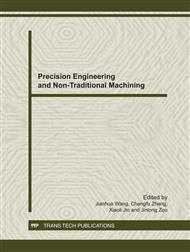p.59
p.64
p.68
p.72
p.77
p.83
p.88
p.97
p.102
Triangular Mesh Simplification Based on Bounded Error
Abstract:
The author proposed a triangular mesh simplification algorithm with the methodology of vertex culling, which is based on bounded error. The algorithm includes several steps as follow. Firstly, the algorithm arrays the vertex according to the curvature. The curvature of local area around one vertex reduces in the array. Secondly, for one vertex to be deleted, the bounding box’s height of the local area will be calculated. And the reduction of the bounding box’s height is controlled as restraint of vertex culling. After the vertex culling, triangular mesh reconstruction is conducted on polygon to fill up the hollows formed in the above steps. This algorithm well balanced the deletion rate and deletion error in the experiment.
Info:
Periodical:
Pages:
77-82
Citation:
Online since:
November 2011
Authors:
Keywords:
Price:
Сopyright:
© 2012 Trans Tech Publications Ltd. All Rights Reserved
Share:
Citation:


